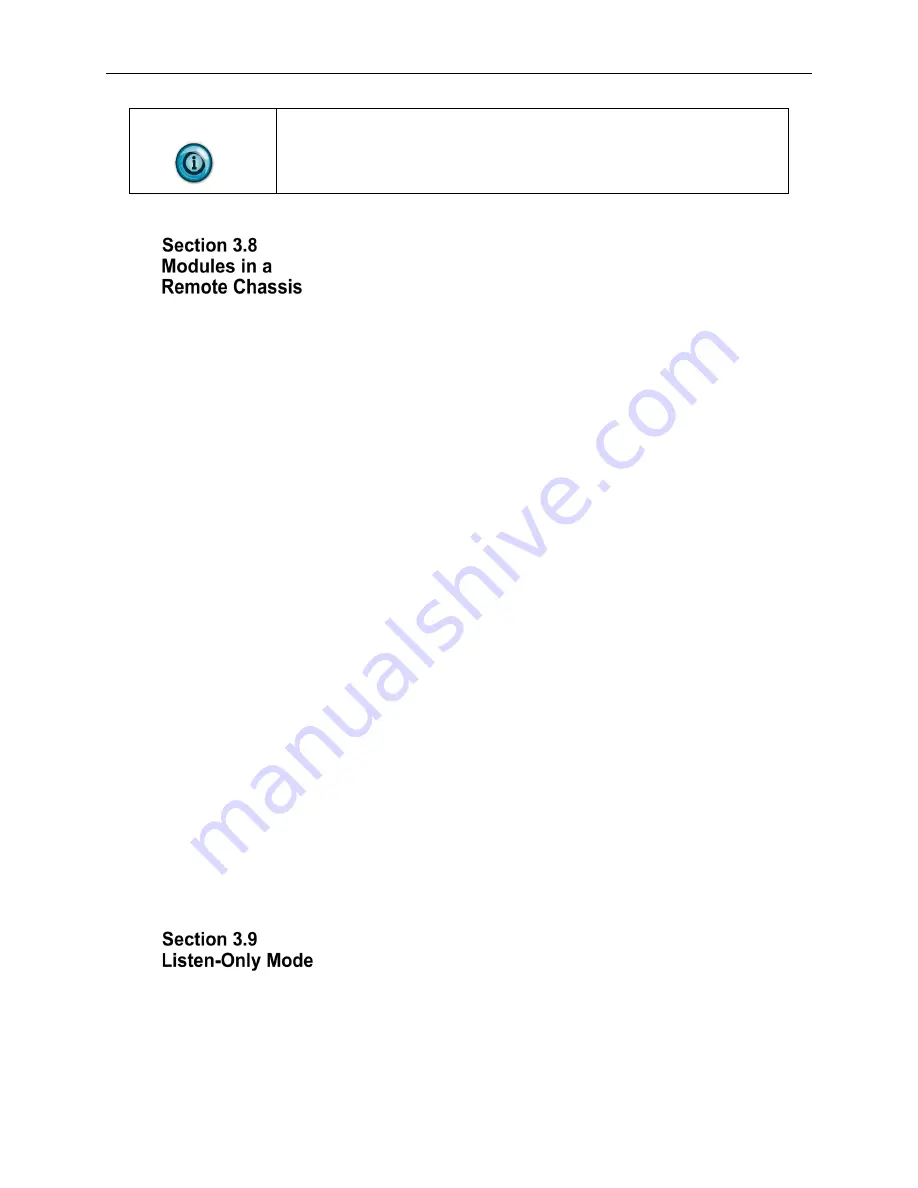
3-4
Chapter 3: Operation Within the ControlLogix System
Owner’s Guide 0300199-01 Rev. D
NOTE
Even though data may be transferred at the RPI rate, the data will be
identical to the previous RTS data transfer.
If an input module resides in a networked chassis, the role of the RPI and the
module’s RTS behavior change slightly with respect to getting data to the owner.
The RPI and RTS intervals still define when the module will multicast data
within its own chassis (as described in the previous section), but only the value of
the RPI determines how often the owner-controller will receive it over the
network.
When an RPI value is specified for an input module in a remote chassis, in
addition to instructing the module to multicast data within its own chassis, the
RPI also “reserves” a spot in the stream of data flowing across the ControlNet
network.
The timing of this “reserved” spot may or may not coincide with the exact value
of the RPI, but the control system will guarantee that the owner-controller will
receive data at least as often as the specified RPI.
The “reserved” spot on the network and the module’s RTS are asynchronous to
each other. This means there are Best and Worst Case scenarios as to when the
owner-controller will receive updated channel data from the module in a
networked chassis.
Best Case RTS Scenario
In the Best Case scenario, the module performs an RTS multicast with updated
channel data just before the “reserved” network slot is made available. In this
case, the remotely located owner receives the data almost immediately.
Worst Case RTS Scenario
In the Worst Case scenario, the module performs an RTS multicast just after the
“reserved” network slot has passed. In this case, the owner-controller will not
receive data until the next scheduled network slot.
Because it is the RPI, and NOT the RTS, which dictates when the module’s data
will be sent over the network, we recommend the RPI value be set LESS THAN
OR EQUAL TO the RTS to make sure that updated channel data is received by
the owner-controller with each receipt of data.
Any controller in the system can listen to the data from any I/O module (for
example, input data or “echoed” output data) even if the controller does not own
the module (that is, it does not have to hold the module’s configuration data to
listen to the module).
The Listen-Only mode is set during the I/O configuration process.
Summary of Contents for 1756-CTR8
Page 1: ...Owner s Guide 0300310 02A...
Page 8: ...viii ControlLogix CTR8 Counter Module Owner s Guide 0300199 01 Rev D...
Page 12: ...1 4 Chapter 1 Module Overview Owner s Guide 0300199 01 Rev D...
Page 44: ...5 10 Chapter 5 Configuration Data and Status Tags Owner s Guide 0300199 01 Rev D...
Page 50: ...6 6 Chapter 6 Programming Examples Owner s Guide 0300199 01 Rev D...
Page 58: ...8 4 Chapter 8 Maintaining Your Module and Ensuring Safety Owner s Guide 0300199 01 Rev D...
Page 68: ...I 2 Index Owner s Guide 0300199 01 Rev D...
Page 69: ...Owner s Guide 0300199 01 Rev D...






























